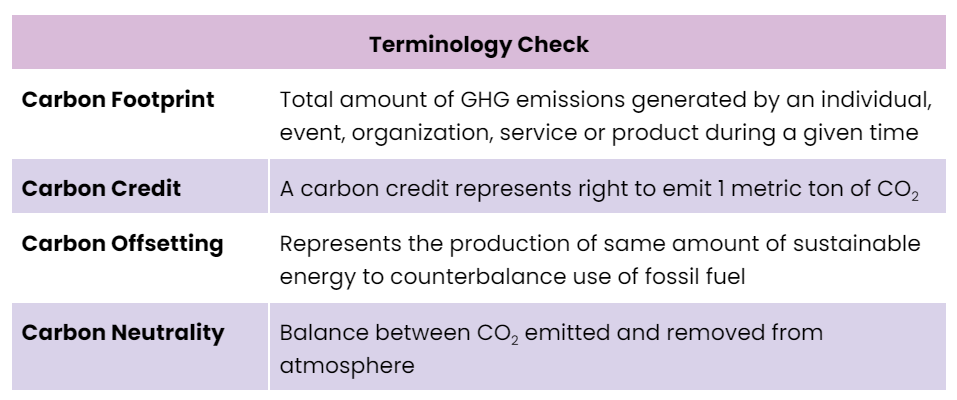3. Carbon Footprint
This a new term that emphasizes more on one's individual action to wards the environment. So, here we will see ways to reduce carbon footprint and its relation to the global Greenhouse gases (GHG) emissions.
Carbon footprint is defined as the measure of the total greenhouse gas emissions released into the atmosphere by individuals or due to process or by an organization. These emissions are caused by the choices and actions of an individual, company or a nation. Carbon footprint is measured in terms of carbon dioxide emissions.

While talking about carbon footprint, it is essential to understand greenhouse gases. (GHG) are responsible for keeping our planet warm, without them, the earth would be un-inhabitable. Water vapor, methane from natural gas, nitrous oxide from soils and oceans, ozone, and carbon dioxide are its main constituents as mentioned in the previous section.
Impact of increased carbon footprint & climate change
-
Impact on environment :
High carbon footprint of individuals and industries has led to increased carbon emissions resulting from climate change which is causing extreme weather events like storms, wildfires, droughts, heat waves and floods. In addition, it has also increased the temperature of the planet and sea levels.
-
Impact on human health[4]:
The various impacts on the environment due to climate change such as climate disaster result in injuries and fatalities. Extreme heat events result in heat related illness and cardiovascular failure. Rising sea level results in floods which deteriorate the quality of water and availability of food resulting in malnutrition, diarrheal diseases, cholera, allergies, malaria, dengue, chikungunya and algal blooms etc.
-
Impact on economy:
The damages caused due to climate change related events disrupts the economy and ability of human resources. It results in forced migration, civil conflicts and mental health impacts due to human and material loss.


